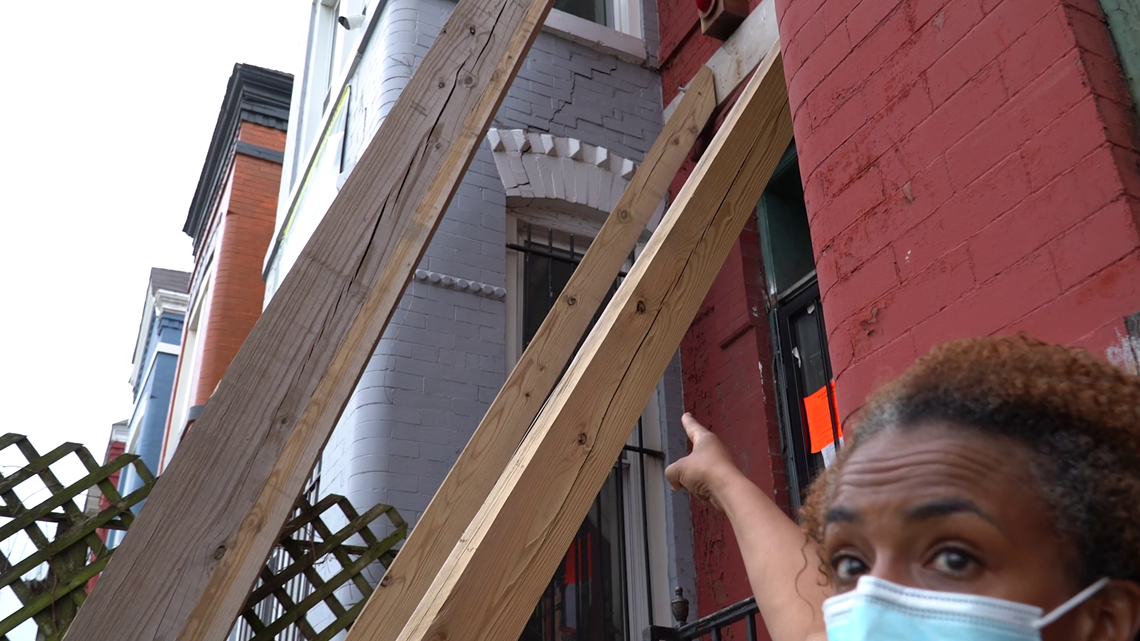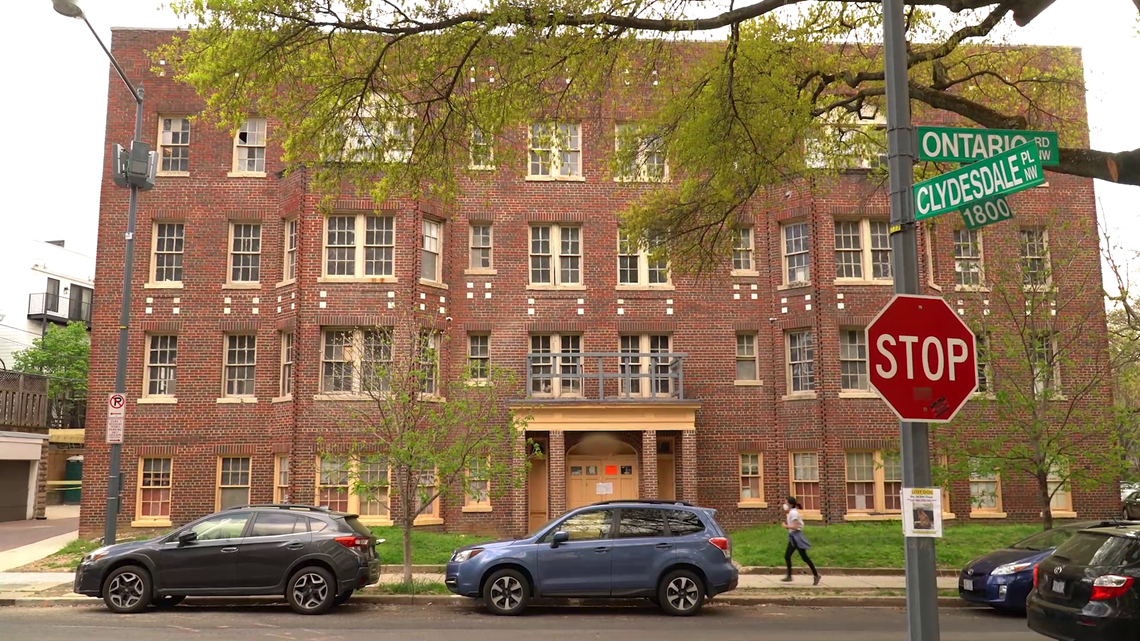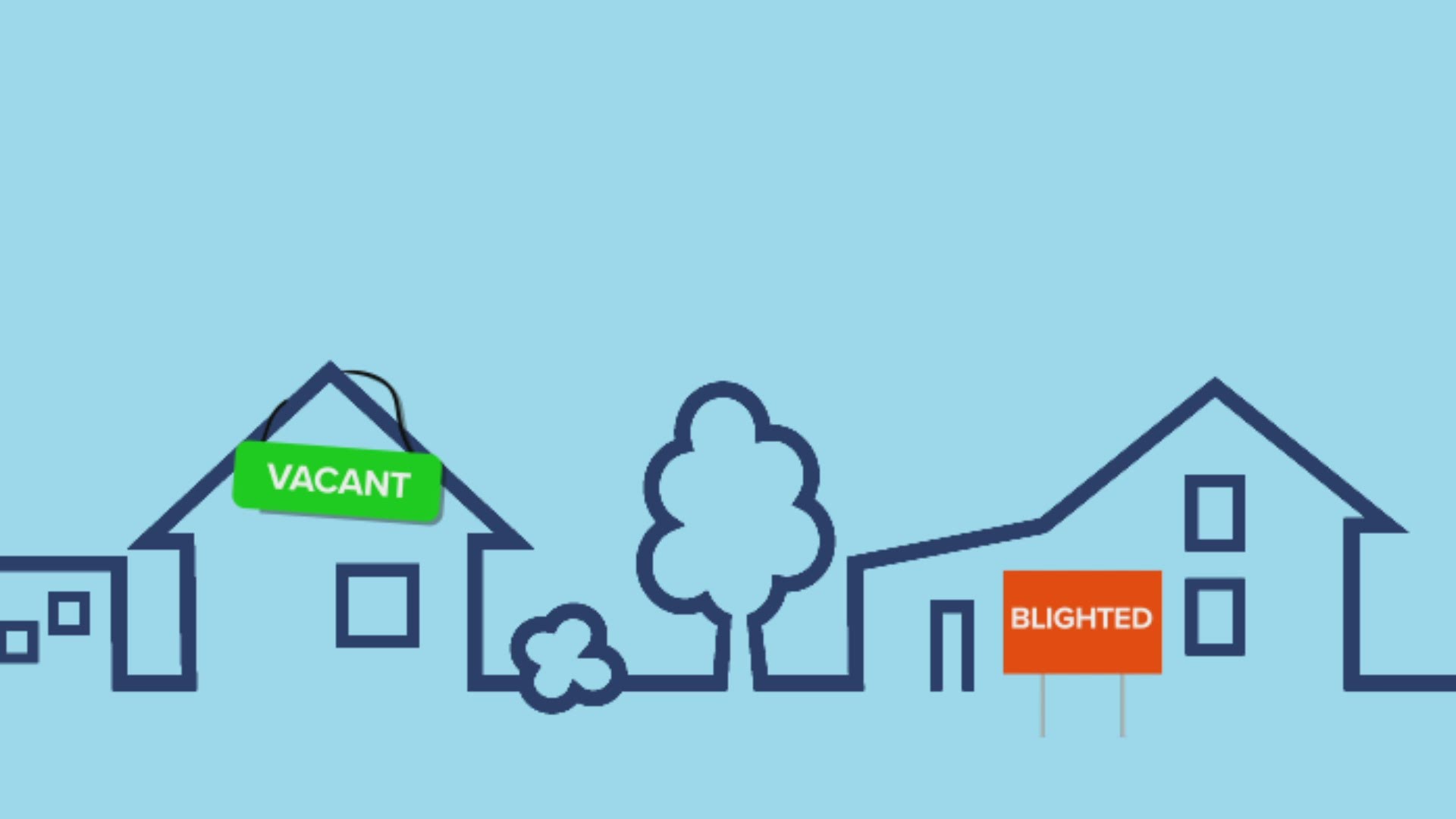WASHINGTON — If you've ever seen run-down houses and apartment buildings around the District and wondered what’s being done about them, you're not alone. DC Council Chairman Phil Mendelson is asking the same question, but now he's demanding action from the city government. Turns out, the distinction between whether a building is "vacant" or "blighted" makes a huge difference in future actions.
A "vacant" property is simply empty. When it comes to D.C. property taxes, owners of vacant buildings must pay five times what the average D.C. homeowner pays.
But a "blighted" tag means a property is in a deteriorated state. Simply put, it’s falling apart. Owners of blighted properties must pay ten times the tax most average homeowners pay.
Chairman Mendelson took WUSA9 reporter Nathan Baca to three D.C. addresses that have been on the city’s books for years as “vacant” to investigate whether they should actually be considered “blighted.”
This house on 18th St NW has no rear wall and a small tree growing inside.


This house on 13th St NW needs braces to keep from collapsing.


This apartment building on Ontario Rd NW has a collapsing roof.


You may think it’s an easy call -- all ll these places are falling apart. But up until a few weeks ago, the D.C. government considered all three properties simply vacant, not blighted, which meant the owners saved on property taxes: an estimated $42,000 each, according to the chairman's office.
"The only reason this is here is because I've complained about it," Mendelson said while pointing to an orange blighted sticker on the door of the Ontario apartment building placed just days prior. "At the oversight hearing with DCRA, I embarrassed the director over these properties that are not being taxed at the penalty rates."
DCRA, D.C.'s Department of Consumer and Regulatory Affairs, decides which properties are labeled vacant and which ones are tagged as blighted after inspections. The agency would not agree to an on-camera interview, but sent this statement to WUSA9:
"In early December 2020, it was discovered that during the technology transitions, some information regarding the classification of vacant and blighted properties was not being properly transmitted and/or received. Since that time, both [DCRA and the DC tax office] have been in collaboration to ensure that our systems are properly communicating to address the issue."
DCRA added that all tax money lost due to the error will be charged to property owners retroactively.
The DC Council overrode a veto by Mayor Muriel Bowser this past February and decided to split up DCRA into two agencies. The council believes a separate DC “Building Department” would focus more on blighted buildings. The council still has to find the money in the budget this summer to make that split happen next year.
Mendelson said this is not just about tax classifications, but about D.C.’s housing shortage.
"It could be low income for affordable housing and mixed income in this neighborhood," he said. "That's what I see here. I see a really lost opportunity."
Neighbor Steven Schutter stopped his bike when he saw Mendelson tour the apartment building and chimed in, "This is a blighted eyesore and we need more affordable housing for people so eventually something has to be done with his building."
WUSA9 first visited this neighborhood in November 2019 when homeowner Mamie Preston showed WUSA9’s Delia Goncalves how collapsing walls next door were damaging her house.
"I expected DCRA to support me and or at a very minimum guide me," Preston said. "But I was left alone."
"And it's only in the last several weeks, that DCRA finally took the step of condemning this property," Mendelson added. "I mean, it's just outrageous. This has been going on how long?"
"Three years and nine months," Preston replied.
One reason according to DCRA letters to Mendelson is that when the agency does flag properties as blighted, building owners often appeal and pull permits for construction work, protecting those property owners from higher taxes. But neighbor statements and WUSA9's own observations show that little repair work is actually done to those properties during the appeal time.


Building owners can and do sit on D.C. real estate for years if they can simply get it labeled as vacant.
While Chairman Mendelson says he succeeded in getting blight labels for two of the three properties WUSA9 toured with him, he can’t tour every run-down building in the city, and pledges to keep pressing DCRA for more inspections and quick action to repair crumbling neighborhoods.
DCRA Director Ernest Chrappah wrote an additional statement:
"While a vacant building may be an eyesore, the law is very specific about what constitutes a blighted property at the time of an inspection. During the pandemic, when many people have experienced financial hardships, our focus has continued to be on supporting thriving neighborhoods and helping owners return properties to productive use, such as these three examples that show once blighted properties that are now beautiful homes.”
The three DCRA examples the agency provided can be seen here:
808 51st Street, NE
4309 13th Place, NE
623 Newton Place, NW
WUSA9 visited the addresses of the property owners according to DC tax records but received no response.

